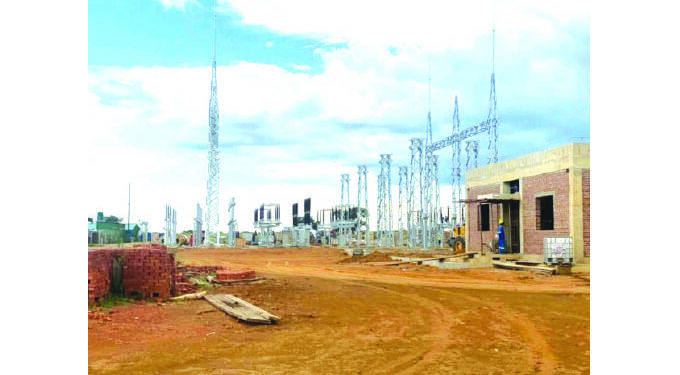A transmission tower is installed at the 25MW Centragrid PV solar expansion project in Nyabira as it inches closer to completion and feed 25MW power into the national grid from the current 2,5MW.
The expansion of the Centragrid (Pvt) Ltd solar station, being built by PowerChina, should have 25MW on grid by the end of the month after the installation of the transformer and the erection of towers to anchor transmission lines.
“The 25MW transformer weighing a staggering 100 tonnes has so far been moved into position at the photovoltaic field, sitting on 50ha and expected to expand to 120ha as the power station continues to grow. The first of at least 1 000 towers has been hoisted as work progresses,” PowerChina confirmed the developments through their X social media platform.
Independent power producers have in recent months been contributing at least 50MW of power to the national grid every day, and often 60MW. Their contribution is expected to grow to around 600MW by 2030 as part of Government’s energy sufficiency drive.
“PowerChina is making significant strides in Zimbabwe with the 25 MW Centragrid PV solar expansion. The first tower stands tall, marking a monumental step towards sustainable economic transformation in Zimbabwe,” reads their post.
“The Zimbabwe Electricity Transmission and Distribution Company (ZETDC) is preparing to install statistical metering at the Norton bulk supply point to manage the uprated solar generation capacity to 25MW from the current 2,5MW’” the company said
Statistical metering allows ZETDC to accurately measure the amount of power fed into the grid in real time while being able to account for losses along the transmission network. It also helps when the independent producer is billing ZETDC for the power it receives.
Solar is set to overtake hydro as the green option with the fall in Zambezi River flows during the more frequent droughts in Southern Africa.
The Zambezi River Authority has cut the two national power authorities to less than a quarter the capacity of their Kariba stations as Lake Kariba water levels fall below even last season’s low levels.
In a statement, ZRA chief executive Engineer Munyaradzi Munodawafa said there were chances that lake levels could be the lowest in recent history.
“The lake level is currently receding, contrary to its historical hydrological performance where it should have been rising during this period of the year,” he said.
“The obtaining recession in the lake levels is mainly due to the below average rainfall received during the on-going 2023-2024 rainfall season.”
SOURCE : THE HERALD2










